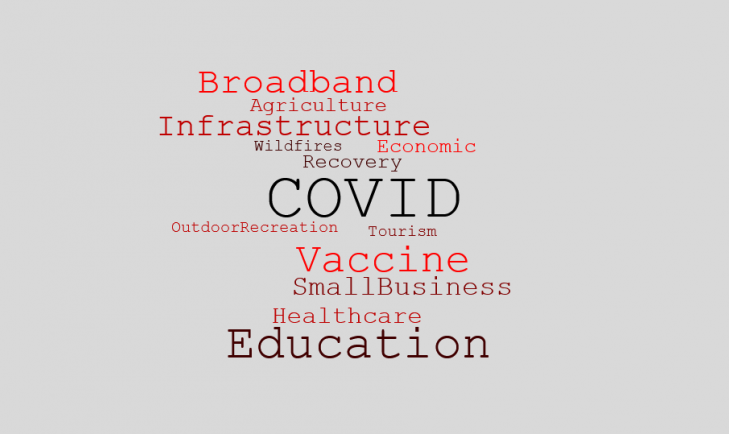
Western Governors are delivering their 2021 State of the State addresses. The "word cloud" above was created using the topics most often mentioned by the Governors in their addresses. Following is a roundup of the speeches in the order they were delivered.
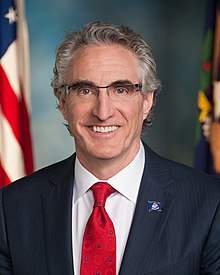 North Dakota Gov. Doug Burgum, on Jan. 4, addressed a joint session of the 67th Legislative Assembly on the progress and challenges of the past year and advocated for bold action and investments in infrastructure and other priorities. The Governor emphasized the opportunity to bond for roads, bridges, career and technical education centers, and other immediate, one-time infrastructure projects. He also highlighted the administration’s progress to reinvent government services to make them more effective and efficient, and shared optimism about the state's rebounding agriculture and energy sectors. The Governor expressed gratitude for the collaborative effort across the state to battle the coronavirus and noted the state's ranking among the top three nationally in COVID-19 testing per capita and number of people per capita initiating vaccination.
North Dakota Gov. Doug Burgum, on Jan. 4, addressed a joint session of the 67th Legislative Assembly on the progress and challenges of the past year and advocated for bold action and investments in infrastructure and other priorities. The Governor emphasized the opportunity to bond for roads, bridges, career and technical education centers, and other immediate, one-time infrastructure projects. He also highlighted the administration’s progress to reinvent government services to make them more effective and efficient, and shared optimism about the state's rebounding agriculture and energy sectors. The Governor expressed gratitude for the collaborative effort across the state to battle the coronavirus and noted the state's ranking among the top three nationally in COVID-19 testing per capita and number of people per capita initiating vaccination.
Read the full transcript. Watch the speech here.
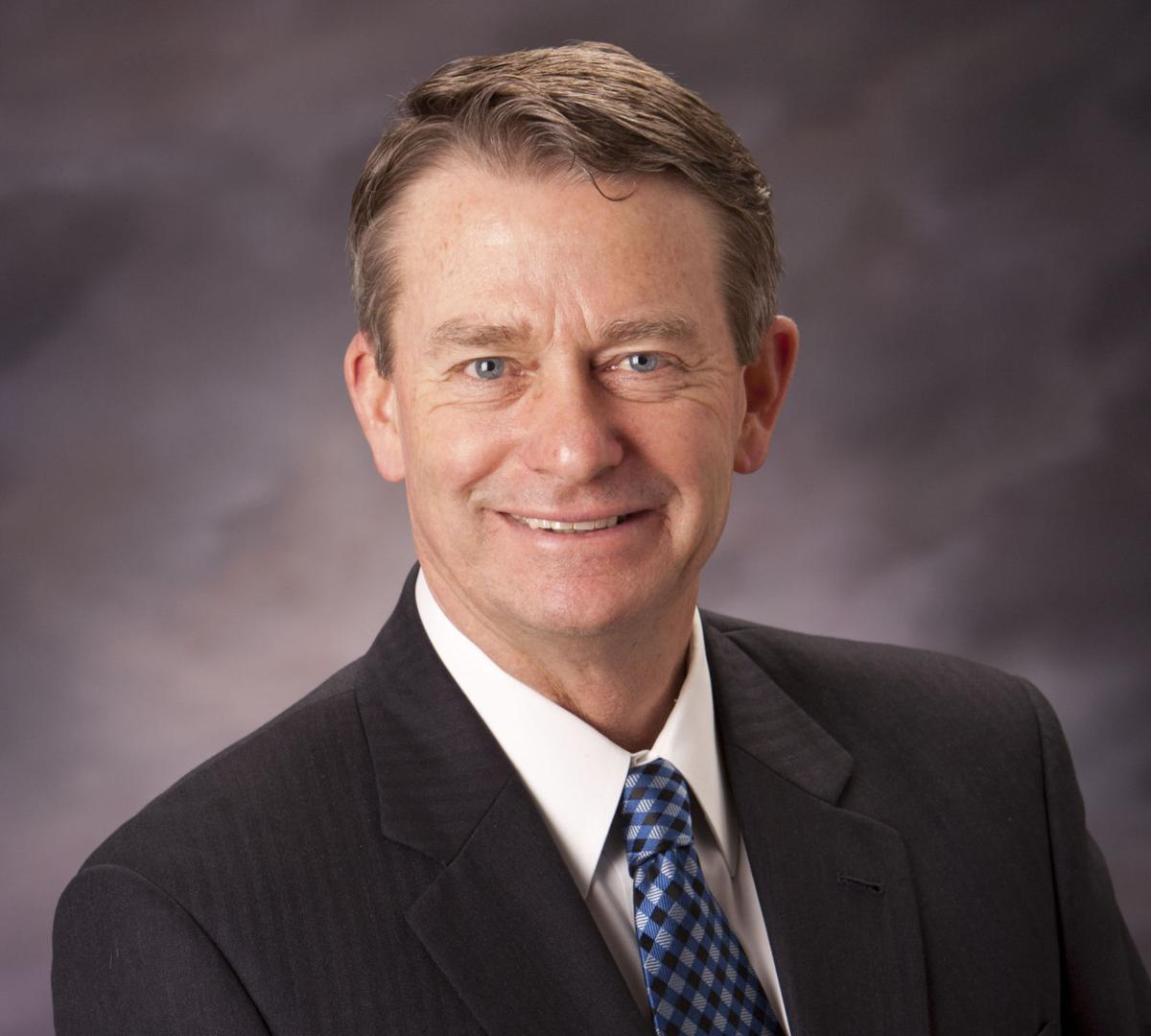 Idaho Gov. Brad Little, on Jan. 11, reflected on the past year and detailed his plan to propel the state further ahead in prosperity. The Governor noted that Idaho’s strong economy and quick action during the pandemic resulted in a record state budget surplus, while many states face cuts. He detailed the “Building Idaho’s Future” plan, including: more than $450 million in tax relief; $126 million in state and local highway infrastructure projects; investments in literacy to close achievement gaps that widened for some students during the pandemic; building on $50 million broadband infrastructure investments last year, the Governor plans $35 million more to improve internet connectivity for underserved areas, and support for small businesses in addition to the $300 million in support last year.
Idaho Gov. Brad Little, on Jan. 11, reflected on the past year and detailed his plan to propel the state further ahead in prosperity. The Governor noted that Idaho’s strong economy and quick action during the pandemic resulted in a record state budget surplus, while many states face cuts. He detailed the “Building Idaho’s Future” plan, including: more than $450 million in tax relief; $126 million in state and local highway infrastructure projects; investments in literacy to close achievement gaps that widened for some students during the pandemic; building on $50 million broadband infrastructure investments last year, the Governor plans $35 million more to improve internet connectivity for underserved areas, and support for small businesses in addition to the $300 million in support last year.
Read the full transcript. Watch the speech here.
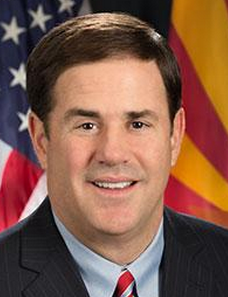
Read the full transcript. Watch the speech here.
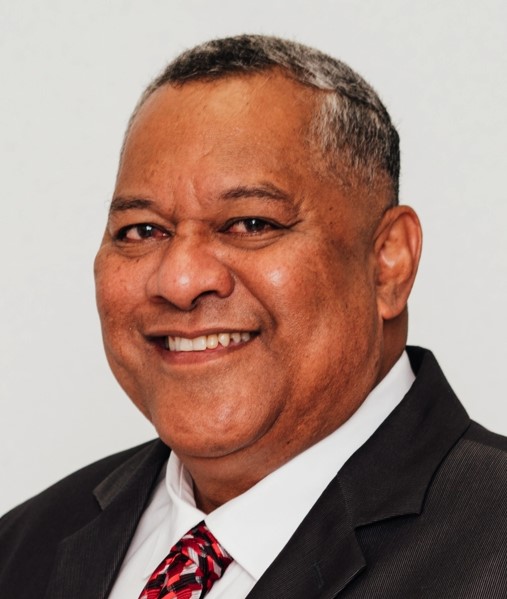 American Samoa Gov. Lemanu Mauga, on Jan. 11, shared his first State of the Territory Address. Rather than focus on past actions, Gov. Mauga focused on the future, with a “priority goal” of “passage of an achievable budget we can agree on, as we can not continue to operate on executive orders and resolutions.” In addition, plans were detailed for addressing COVID-19 issues, including the repatriation of more than 600 citizens stranded in the U.S. The Governor concluded by vowing that “In the first 100 days, we hope to release a clear vision across various issues and priorities. While our many issues cannot be solved in 100 days, we do intend to outline the direction and priorities of our administration over the next four years.”
American Samoa Gov. Lemanu Mauga, on Jan. 11, shared his first State of the Territory Address. Rather than focus on past actions, Gov. Mauga focused on the future, with a “priority goal” of “passage of an achievable budget we can agree on, as we can not continue to operate on executive orders and resolutions.” In addition, plans were detailed for addressing COVID-19 issues, including the repatriation of more than 600 citizens stranded in the U.S. The Governor concluded by vowing that “In the first 100 days, we hope to release a clear vision across various issues and priorities. While our many issues cannot be solved in 100 days, we do intend to outline the direction and priorities of our administration over the next four years.”
Read the address.
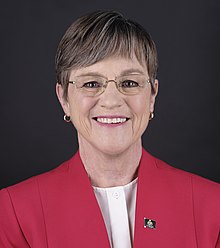 Kansas Gov. Laura Kelly, on Jan. 12, opened her virtual remarks by discussing the toll of COVID-19 in the state and updated progress on vaccinations to date. The Governor noted her Administration's efforts, including a $12 million investment, to keep the state's food supply chain workers safe and production online during the pandemic. Gov. Kelly highlighted Framework for Growth – a new roadmap to ensure the Kansas economy thrives and offers its young people exciting career opportunities close to home. The Framework focuses on small businesses, infrastructure, new job creation, agriculture, and broadband. Noting that businesses small and large depend upon broadband, the Governor detailed her establishment of the state’s Office of Broadband Development, which has distributed nearly $50 million in connectivity grants to communities statewide.
Kansas Gov. Laura Kelly, on Jan. 12, opened her virtual remarks by discussing the toll of COVID-19 in the state and updated progress on vaccinations to date. The Governor noted her Administration's efforts, including a $12 million investment, to keep the state's food supply chain workers safe and production online during the pandemic. Gov. Kelly highlighted Framework for Growth – a new roadmap to ensure the Kansas economy thrives and offers its young people exciting career opportunities close to home. The Framework focuses on small businesses, infrastructure, new job creation, agriculture, and broadband. Noting that businesses small and large depend upon broadband, the Governor detailed her establishment of the state’s Office of Broadband Development, which has distributed nearly $50 million in connectivity grants to communities statewide.
Read the full transcript. Watch the speech here.
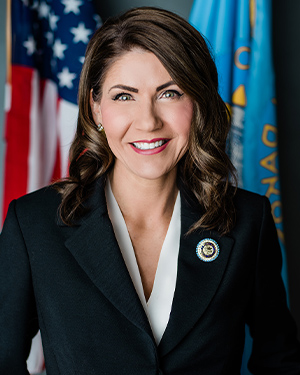 South Dakota Gov. Kristi Noem, on Jan. 12, shared the past year's work, including $2.8 billion in capital investment, and plans for 2021 in remarks before the state legislature. The Governor highlighted the largest project in the history of the Governor’s Office of Economic Development, a just-signed $500 million investment from Schwan’s that will bring 600 full-time jobs to Sioux Falls. The Governor, who emphasized she is a "family-first governor," also proposed investments to finish connecting the 135,000 state residents without high-speed broadband access, support agriculture, and expand telehealth. Finally, she provided an update on the state’s work to curtail substance abuse and noted that the state tourism department is working on a new strategic plan to take advantage of recent interest in the state.
South Dakota Gov. Kristi Noem, on Jan. 12, shared the past year's work, including $2.8 billion in capital investment, and plans for 2021 in remarks before the state legislature. The Governor highlighted the largest project in the history of the Governor’s Office of Economic Development, a just-signed $500 million investment from Schwan’s that will bring 600 full-time jobs to Sioux Falls. The Governor, who emphasized she is a "family-first governor," also proposed investments to finish connecting the 135,000 state residents without high-speed broadband access, support agriculture, and expand telehealth. Finally, she provided an update on the state’s work to curtail substance abuse and noted that the state tourism department is working on a new strategic plan to take advantage of recent interest in the state.
Read the full transcript. Watch the speech here.
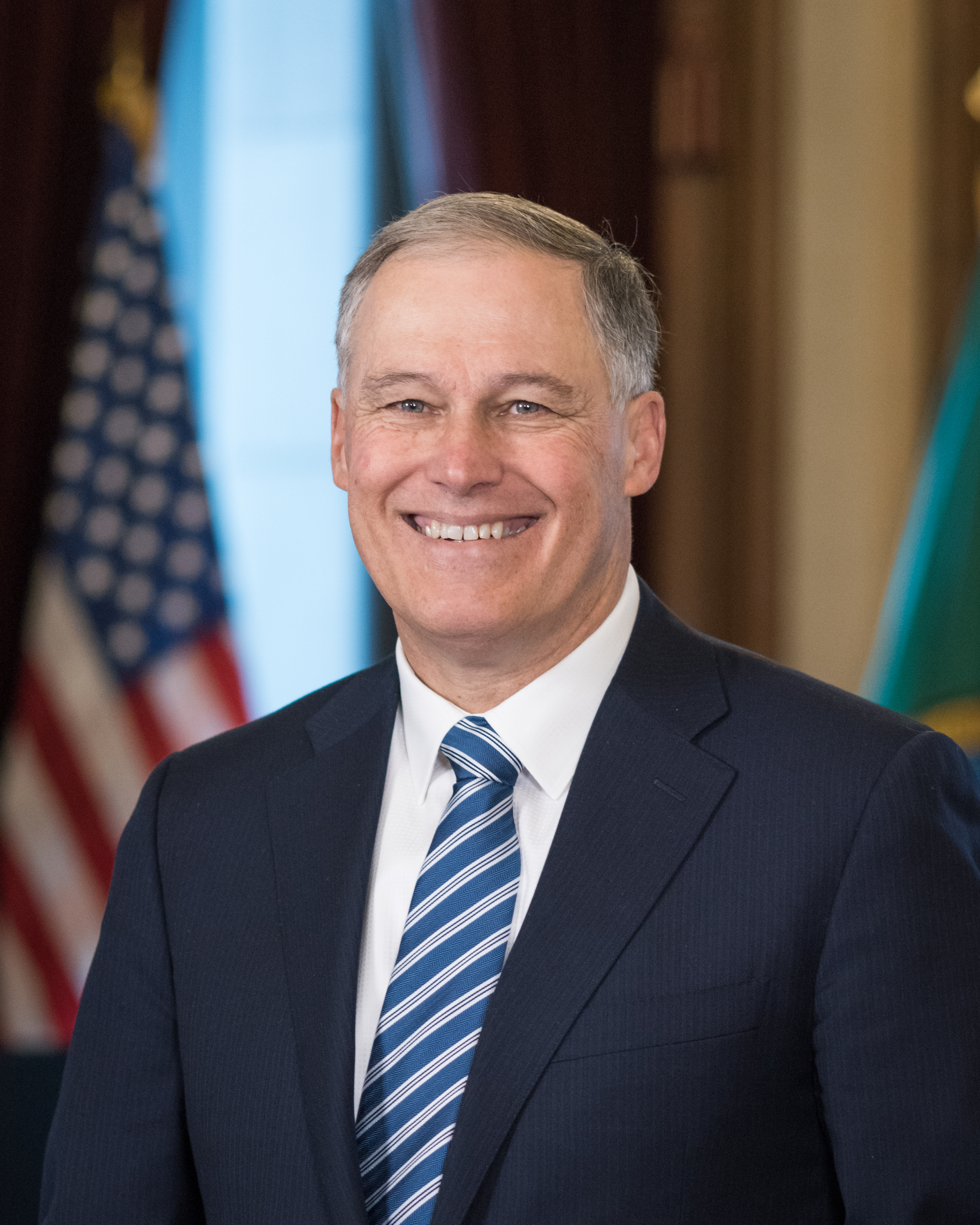 Washington Gov. Jay Inslee, on Jan. 13, said in a virtual address it is time for “relief, recovery and resilience.” The Governor, acknowledging the more than 3,500 Washingtonians who have died so far in the pandemic and thousands still struggling to recover, said "We are not going back to normal. We are going forward toward a new normal." To accomplish that, the Governor advocated for: supporting small businesses by reducing increases in the unemployment tax; improving the state’s behavioral health system; continuing student financial aid commitments so that more people can earn degrees, certificates or apprenticeships to get jobs; and focus on climate change, which “threatens to unmake the state … (with) the growing number and intensity of wildfires to the evaporation of our snowpack.”
Washington Gov. Jay Inslee, on Jan. 13, said in a virtual address it is time for “relief, recovery and resilience.” The Governor, acknowledging the more than 3,500 Washingtonians who have died so far in the pandemic and thousands still struggling to recover, said "We are not going back to normal. We are going forward toward a new normal." To accomplish that, the Governor advocated for: supporting small businesses by reducing increases in the unemployment tax; improving the state’s behavioral health system; continuing student financial aid commitments so that more people can earn degrees, certificates or apprenticeships to get jobs; and focus on climate change, which “threatens to unmake the state … (with) the growing number and intensity of wildfires to the evaporation of our snowpack.”
Read the full transcript, watch the speech here
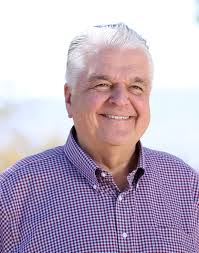 Nevada Gov. Steve Sisolak, on Jan. 19, opened his State of the State speech, delivered remotely due to the pandemic, by noting Nevadans "face our challenges head on.” After sharing results since his last address in 2019, including raises for teachers and insurance legislation, the Governor shared his vision to chart a path forward, highlighted by an additional $50 million for a small business emergency grant program to energize the economy. Gov. Sisolak also promised to run the "largest vaccination campaign” in state history, get students back in classrooms, and provide teachers with the tools they need. He outlined opportunities for state growth by participation in the new energy economy, the creation of Innovation Zones, preparation of the workforce for the new economy, and building infrastructure.
Nevada Gov. Steve Sisolak, on Jan. 19, opened his State of the State speech, delivered remotely due to the pandemic, by noting Nevadans "face our challenges head on.” After sharing results since his last address in 2019, including raises for teachers and insurance legislation, the Governor shared his vision to chart a path forward, highlighted by an additional $50 million for a small business emergency grant program to energize the economy. Gov. Sisolak also promised to run the "largest vaccination campaign” in state history, get students back in classrooms, and provide teachers with the tools they need. He outlined opportunities for state growth by participation in the new energy economy, the creation of Innovation Zones, preparation of the workforce for the new economy, and building infrastructure.
Read the full transcript. Watch the speech here.
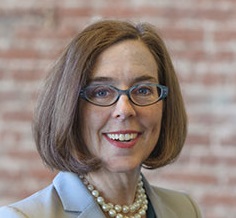 Oregon Gov. Kate Brown, on Jan. 21, asserted in a virtual address that the state has emerged from 2020 prepared to overcome COVID-19. The Governor noted last year’s unprecedented wildfires – which burned more than 1.2 million acres, destroyed more than 4,000 homes, and left nine Oregonians dead – and discussed how to help communities create response plans and fire evacuation routes to ensure that they’re better equipped for future fire seasons. The Governor also highlighted a $250 million plan to address affordable housing, homelessness prevention and rental assistance, and advocated for expanded broadband access in rural communities and increased health care funding. The Governor said the state must prioritize criminal justice reform, saying “We cannot continue to operate with two systems of justice in our country.”
Oregon Gov. Kate Brown, on Jan. 21, asserted in a virtual address that the state has emerged from 2020 prepared to overcome COVID-19. The Governor noted last year’s unprecedented wildfires – which burned more than 1.2 million acres, destroyed more than 4,000 homes, and left nine Oregonians dead – and discussed how to help communities create response plans and fire evacuation routes to ensure that they’re better equipped for future fire seasons. The Governor also highlighted a $250 million plan to address affordable housing, homelessness prevention and rental assistance, and advocated for expanded broadband access in rural communities and increased health care funding. The Governor said the state must prioritize criminal justice reform, saying “We cannot continue to operate with two systems of justice in our country.”
Read the speech. Watch the speech here.
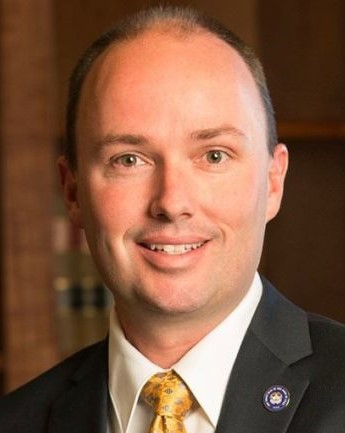 Utah Gov. Spencer Cox, on Jan. 22, delivered his first State of the State address — remarks the Governor called the “shortest in state history” to avoid COVID-19 spread among the masked lawmakers sitting in the House chamber. Further acknowledging the pandemic, Cox thanked health care workers, first responders, business workers, senior citizens, and teachers for their efforts. The Governor also noted that while the state currently is experiencing “unprecedented” growth, challenges come with it that must be addressed, such as air quality, transportation, water, and housing. And he said the upcoming legislative session presents a chance to cut taxes and “provide historic investments for infrastructure.” Finally, the Governor proposed “significant increases in job training, up-skilling and more money for our trade and technical educational institutions.”
Utah Gov. Spencer Cox, on Jan. 22, delivered his first State of the State address — remarks the Governor called the “shortest in state history” to avoid COVID-19 spread among the masked lawmakers sitting in the House chamber. Further acknowledging the pandemic, Cox thanked health care workers, first responders, business workers, senior citizens, and teachers for their efforts. The Governor also noted that while the state currently is experiencing “unprecedented” growth, challenges come with it that must be addressed, such as air quality, transportation, water, and housing. And he said the upcoming legislative session presents a chance to cut taxes and “provide historic investments for infrastructure.” Finally, the Governor proposed “significant increases in job training, up-skilling and more money for our trade and technical educational institutions.”
Read the address. Watch the speech here.
 Hawaii Gov. David Ige, on Jan. 25, delivered a virtual address that addressed the challenges of COVID-19 and the government’s response, which included financial support for small businesses, commercial fishing, local PPE manufacturing, food assistance, computers and connectivity, and healthcare workers. In the area of affordable housing, the Governor noted the achievement of a goal to build 10,000 homes by 2020 and set a goal of 3,000 more by the end of 2022. The Governor noted that revenues, especially from tourism, will not return to pre-pandemic levels until 2024, which reminds that continued diversification of the economy into sectors such as technology is important. The Governor also announced the acceleration of a project to connect rural areas to broadband service, with an emphasis on underserved communities.
Hawaii Gov. David Ige, on Jan. 25, delivered a virtual address that addressed the challenges of COVID-19 and the government’s response, which included financial support for small businesses, commercial fishing, local PPE manufacturing, food assistance, computers and connectivity, and healthcare workers. In the area of affordable housing, the Governor noted the achievement of a goal to build 10,000 homes by 2020 and set a goal of 3,000 more by the end of 2022. The Governor noted that revenues, especially from tourism, will not return to pre-pandemic levels until 2024, which reminds that continued diversification of the economy into sectors such as technology is important. The Governor also announced the acceleration of a project to connect rural areas to broadband service, with an emphasis on underserved communities.
Read the full transcript. Watch the speech here.
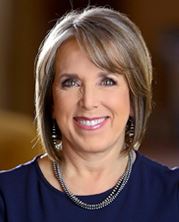
Read the full transcript. Watch the speech here.
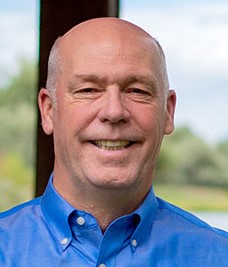 Montana Gov. Greg Gianforte, on Jan. 28, highlighted the resiliency of Montanans in an address to a joint session of the state Legislature. The Governor also outlined his priorities to get the state through the pandemic, create more opportunities, confront threats to our communities like the drug epidemic, and "change the way Helena does business to be more responsive to the people they serve." Specifically, the Governor seeks to achieve these priorities by helping small businesses through reform of the business equipment tax, increasing starting teachers’ pay to encourage them to stay in state, and providing Property Tax Relief to Lower-Income Montanans. And to ensure communities, the Governor seeks to confront drug use, in part, by using tax revenues from the sale of recreational marijuana.
Montana Gov. Greg Gianforte, on Jan. 28, highlighted the resiliency of Montanans in an address to a joint session of the state Legislature. The Governor also outlined his priorities to get the state through the pandemic, create more opportunities, confront threats to our communities like the drug epidemic, and "change the way Helena does business to be more responsive to the people they serve." Specifically, the Governor seeks to achieve these priorities by helping small businesses through reform of the business equipment tax, increasing starting teachers’ pay to encourage them to stay in state, and providing Property Tax Relief to Lower-Income Montanans. And to ensure communities, the Governor seeks to confront drug use, in part, by using tax revenues from the sale of recreational marijuana.
Read the transcript. Watch the speech.
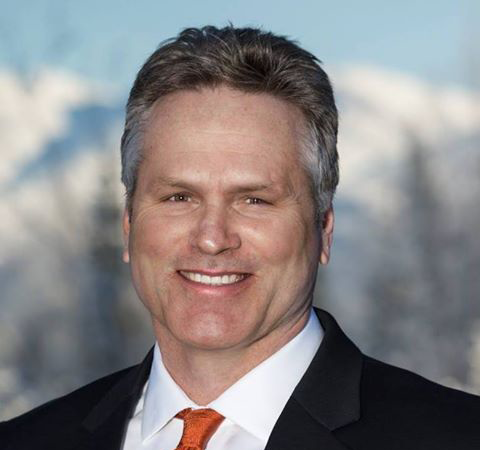 Alaska Gov. Mike Dunleavy, on Jan. 28, lauded state residents during his virtual address for stepping up during the pandemic, whether it was distilleries producing hand sanitizer or "everyday Alaskans organizing charity campaigns and food drives out of the goodness of their hearts." The Governor advocated for a "once-in-a-lifetime budget for a once-in-a-lifetime disaster," which includes $5 billion "toward pulling Alaskans out of a crisis the likes of which this generation has never faced." He also promised to boost education, in part by introducing legislation to increase funding for public homeschooling and establishment of summer camps to boost reading, math, and coding skills of our students, and to create an apprenticeship program that will allow high schoolers to earn credit while working for local businesses.
Alaska Gov. Mike Dunleavy, on Jan. 28, lauded state residents during his virtual address for stepping up during the pandemic, whether it was distilleries producing hand sanitizer or "everyday Alaskans organizing charity campaigns and food drives out of the goodness of their hearts." The Governor advocated for a "once-in-a-lifetime budget for a once-in-a-lifetime disaster," which includes $5 billion "toward pulling Alaskans out of a crisis the likes of which this generation has never faced." He also promised to boost education, in part by introducing legislation to increase funding for public homeschooling and establishment of summer camps to boost reading, math, and coding skills of our students, and to create an apprenticeship program that will allow high schoolers to earn credit while working for local businesses.
Read the transcript. Watch the speech.
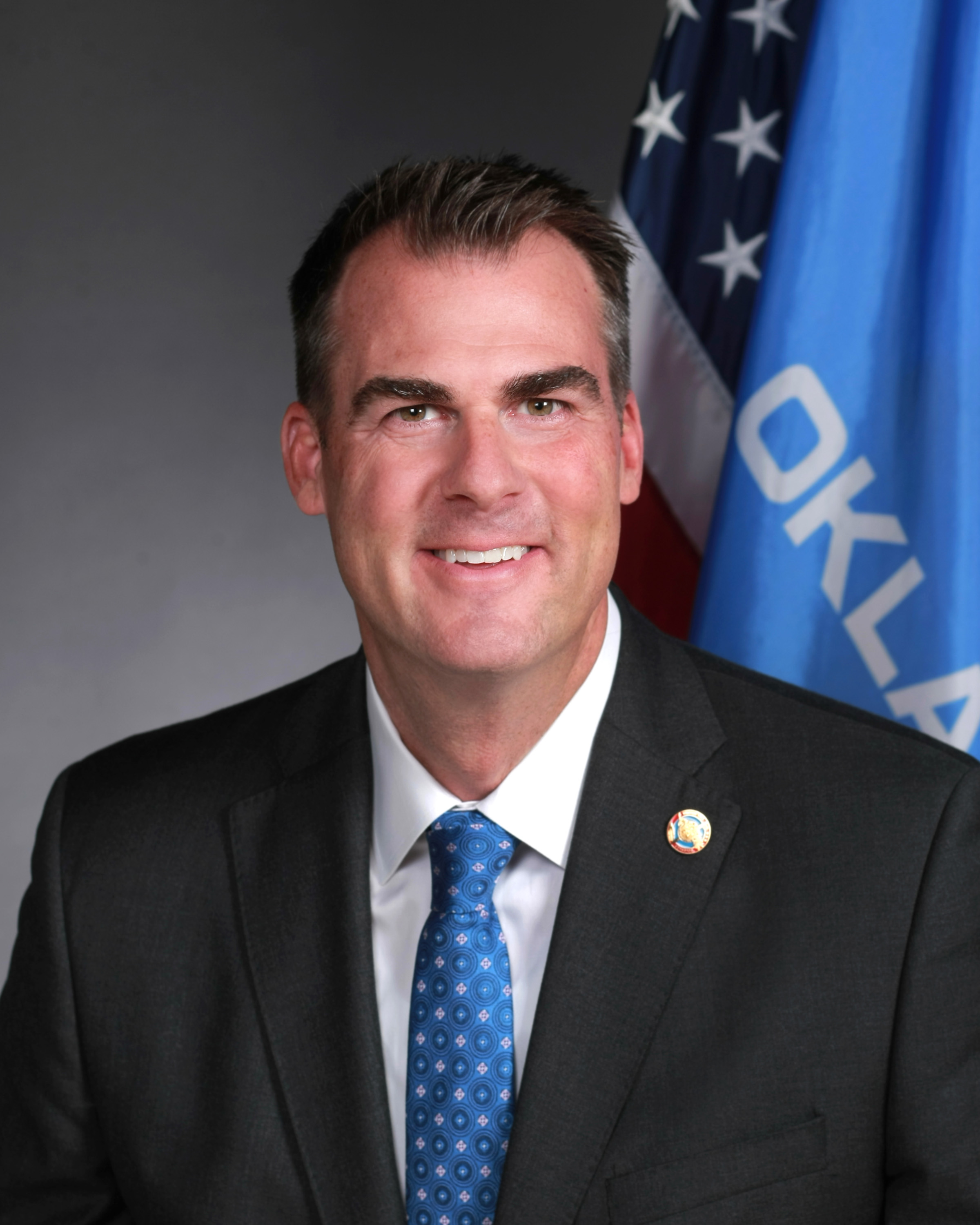 Oklahoma Gov. Kevin Stitt, on Feb. 1, highlighted his administration’s response to the COVID-19 pandemic, support for Oklahoma schools and teachers, economic growth, and a continued focus on improving transparency, accountability and efficiency in state government. The Governor opened by acknowledging the 3,000 Oklahomans lost to the coronavirus, also praising the “Oklahomans who rose to the challenge: as individuals, as families and as neighbors.” He noted his efforts to return students to in-person learning, including the prioritization of teachers to get the vaccine. Legislatively, he said “The People’s Agenda for this legislative session has three main pillars: Number one, Make Oklahoma a Top Ten state for business, number two, deliver taxpayers more for their money and number three, invest in our fellow Oklahomans.”
Oklahoma Gov. Kevin Stitt, on Feb. 1, highlighted his administration’s response to the COVID-19 pandemic, support for Oklahoma schools and teachers, economic growth, and a continued focus on improving transparency, accountability and efficiency in state government. The Governor opened by acknowledging the 3,000 Oklahomans lost to the coronavirus, also praising the “Oklahomans who rose to the challenge: as individuals, as families and as neighbors.” He noted his efforts to return students to in-person learning, including the prioritization of teachers to get the vaccine. Legislatively, he said “The People’s Agenda for this legislative session has three main pillars: Number one, Make Oklahoma a Top Ten state for business, number two, deliver taxpayers more for their money and number three, invest in our fellow Oklahomans.”
Read the transcript. Watch the speech.
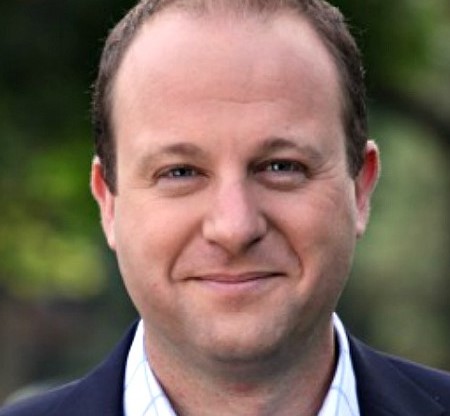 Colorado Gov. Jared Polis, on Feb. 17, asserted "Coloradans face down tough times with grit" and now are poised to “rise from the ashes to fulfill the promise of a Colorado for all" in his address to the state's General Assembly. “Fulfilling that promise means building back stronger than before the pandemic, creating jobs, tax relief, helping small businesses, saving people money on health care, taking bold climate action, achieving 100% renewable energy, and building an economy that works for all.” Gov. Polis also discussed criminal justice reform and proposed spending more than $1 billion in stimulus dollars on projects to help the state economy. The Governor seeks to invest in rural communities, including a continuing effort to bring “broadband to every corner of our state.”
Colorado Gov. Jared Polis, on Feb. 17, asserted "Coloradans face down tough times with grit" and now are poised to “rise from the ashes to fulfill the promise of a Colorado for all" in his address to the state's General Assembly. “Fulfilling that promise means building back stronger than before the pandemic, creating jobs, tax relief, helping small businesses, saving people money on health care, taking bold climate action, achieving 100% renewable energy, and building an economy that works for all.” Gov. Polis also discussed criminal justice reform and proposed spending more than $1 billion in stimulus dollars on projects to help the state economy. The Governor seeks to invest in rural communities, including a continuing effort to bring “broadband to every corner of our state.”
Read the address. Watch the speech.
 Wyoming Gov. Mark Gordon, on March 2, emphasized his commitment to Wyoming’s energy economy and its fiscal health during his address. The Governor asked the Legislature to think carefully about the balanced budget he presented to them and to position Wyoming for the future when addressing K-12 education funding. “We’re entering more frugal times and will have to continue to temper wants and emphasize needs,” he said. The Governor emphasized the need for the state to retain a “broad energy portfolio” that includes both fossil fuels and renewables. Gov. Gordon highlighted his goal to expand the Wyoming Innovation Network (WIN), his higher education initiative, to “develop education initiatives necessary to strengthen the state's workforce, promote entrepreneurship, and support economic growth and diversification.”
Wyoming Gov. Mark Gordon, on March 2, emphasized his commitment to Wyoming’s energy economy and its fiscal health during his address. The Governor asked the Legislature to think carefully about the balanced budget he presented to them and to position Wyoming for the future when addressing K-12 education funding. “We’re entering more frugal times and will have to continue to temper wants and emphasize needs,” he said. The Governor emphasized the need for the state to retain a “broad energy portfolio” that includes both fossil fuels and renewables. Gov. Gordon highlighted his goal to expand the Wyoming Innovation Network (WIN), his higher education initiative, to “develop education initiatives necessary to strengthen the state's workforce, promote entrepreneurship, and support economic growth and diversification.”
Read the address. Watch the speech.
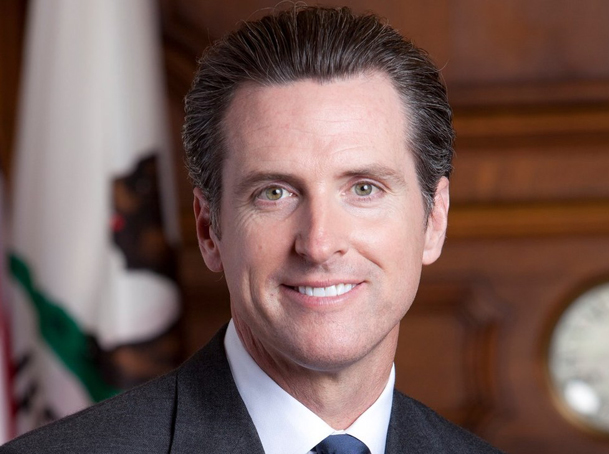 California Gov. Gavin Newsom, on March 9, delivered his address virtually from Dodger Stadium, one of the nation’s largest vaccination sites, and highlighted the state’s progress in battling the pandemic. The Governor reflected on the Californians who have been lost to COVID-19 and recognized everyday citizens who have risen to meet the challenge. He highlighted the urgent relief being provided to the hardest-hit Californians and small businesses, and how the state is accelerating the reopening of its schools. Finally, the Governor laid out the work ahead to enable a safe reopening and also ensure that the state emerges in an equitable, broad-based recovery. “The building blocks of our recovery are in place,” he said, “and now we are leading the way out of this pandemic.
California Gov. Gavin Newsom, on March 9, delivered his address virtually from Dodger Stadium, one of the nation’s largest vaccination sites, and highlighted the state’s progress in battling the pandemic. The Governor reflected on the Californians who have been lost to COVID-19 and recognized everyday citizens who have risen to meet the challenge. He highlighted the urgent relief being provided to the hardest-hit Californians and small businesses, and how the state is accelerating the reopening of its schools. Finally, the Governor laid out the work ahead to enable a safe reopening and also ensure that the state emerges in an equitable, broad-based recovery. “The building blocks of our recovery are in place,” he said, “and now we are leading the way out of this pandemic.
Read the address. Watch the speech.
Get the latest news about the West and its governors by following the Western Governors' Association on Twitter, Facebook and LinkedIn.
Check out our podcast, Out West, on Podbean, Spotify and Apple Podcasts